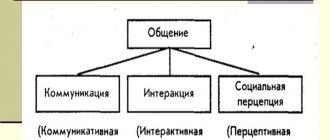First there was the "Word". This is the gift that nature has given us. The person can speak. This distinguishes it from the animal world. The problem is that using seemingly the same words, we speak differently. Some may be listened to with their mouths open, while others may be interrupted mid-sentence and yawned from the very beginning of their story.
So how can you learn to tell interesting stories and keep your audience on the edge of your seat until the very last minute of the story?
Rule #1
Reading. No matter how strange it may sound, reading increases our vocabulary and helps us get rid of parasitic words: “Mmmm”, “Eeeee”, “Wooot”, “Nuuu”...
In stories, the audience tries to perceive the text “by ear”; they are unlikely to be happy with your hesitations. It’s even worse when you start searching for words in your head and there’s an awkward pause. It's very easy to lose connection with your audience.
Reading is a great way to improve your speech, stock up on rich epithets and catchphrases. They will help you be on top when you are passionate about sharing your story with the public.
Reading out loud will be especially beneficial.
Literary techniques of a writer that can be useful to everyone
It doesn’t matter whether you write texts professionally, are taking your first steps in writing, or creating a good text just appears on your list of responsibilities from time to time, in any case, it is necessary and important to know what literary techniques a writer has. The ability to use them is a very useful skill that can be useful to everyone, not only in writing texts, but also in ordinary speech. We invite you to familiarize yourself with the most common and effective literary techniques. Each of them will be provided with a vivid example for a more precise understanding. Read more…
9
Rule #2
Let's start keeping a diary. What if not a writing skill will help you track the gaps in your speech. Learn to write correctly, without mistakes. Try to control the “flow of your thoughts” first on paper and then verbally. The paper will show you your shortcomings, and you will be able to analyze your speech clearly, without outside help.
Training
I am sure that theory must be supported by practice. Therefore, I hasten to tell you good news: there is an excellent training course by Pavel Volya “Humor. Stand-up 2.0”. After completing it, you will feel a powerful influx of knowledge, emotions, experience and initiative. How is the course useful? He will give you the skills to joke well, think clearly and communicate correctly with people, convey emotions to the public, infect them with them, speak figuratively.
You will be able to see yourself in a new role as an actor and acquire public speaking skills. And I also have a little surprise - I’m giving you a promotional code for a 25 percent discount:
PRT3081CBA
If you want to be a super storyteller, this is the place for you.
This investment in yourself will pay off very quickly, and you will become much more productive. By the way, there is an article reviewing the project on our blog, read:
- Courses of the “Willpower” project – the most detailed overview of the trainings of Pavel Volya and Laysan Utyasheva + reviews
Rule #3
Record your words on a voice recorder . This will help you see how interconnected the speech is. Record your story, then listen. Try to understand how interesting it was for you to listen to her.
Would you listen to this story if someone else told it, in the same format as you wrote it down?
If you liked what you heard, congratulations, you are an interesting storyteller. If not, work on your speech until you get a great result.
Ways to Learn Storytelling
Let's first understand what exactly we want to learn. Storytelling: “story” from English means history, “telling” means to speak, say. This term is relatively new and implies “to tell, to tell a story.” But what we mean by this concept is an interesting, intriguing story telling.
In storytelling, no one drags anyone by the leg to their side. There are no straightforward statements here. A straightforward format is not suitable here, and there is no clear distinction between “good and evil”, “good and bad”. A path is laid out for the reader, listener, through which he will decide exactly how he will now relate to the plot, how to perceive new information.
And now we come to the most important thing - storytelling techniques. I won’t deceive you, learning this genre is easier for creative people. But anyone can learn how to convey the plot of a story in an interesting and funny way if they practice the techniques of telling them.
Monomyth
This is a story about various adventures, the hero's journey. The story is led by one hero who encounters different situations in his life. Of course, you need to add a little drama, in fact, the dramatic genre also works here: there is an introduction, the beginning of the plot, its development, the culmination of the whole story and the ending.
This technique helps to understand what situations caused the hero to come to certain conclusions. This technique works great in fairy tales for children, when an adult wants to instill some values in a child. Of course, adding various, at first glance, insoluble situations, mysterious heroes.
Our folk art in its fairy tales succeeded in this technique. For example, the fairy tale about Masha and the bears or Vasilisa the Beautiful, etc. It is important in this genre not to make the story boring. To do this, add humor, develop it in yourself.
Mountain
The same thing, only with one nuance - the hero does not expect world peace or unlimited happiness. He goes through various tests, loses something, and fails in the end, but he does not despair, and is sure that all this was not in vain.
The story ends with the fact that he did not walk this path in vain. A great story for a newly minted group leader. This way you can gain respect in a short time.
Frame
A technique that allows you to combine different stories into one concept. What does it mean? When you tell different situations, but in the same “frame”. That is, there is something in the story that unites them all. “A Thousand and One Nights” was built on this principle. In this story, the king's palace brings together all the tales told by Scheherazade.
Framing is important here. When you tell a story, start with the framing. For example, your family goes out into nature. You describe how you got together, prepared food together, some incidents. But in all this you emphasize the unity and cohesion of your family. And later, when you tell other journeys of the family, the basis is unity and cohesion.
Comparison
We often use this technique when raising children, without even knowing it! The comparison technique (sparklines - as it already is and as it could be) is based on the contrast of a real situation and a possible imaginary one. For example, we tell a child: “Your grade in math is low, but if you had worked harder yesterday, you would have solved this example easily.”
This is a small example of contrast. In an interesting story, comparison is also actively used. It is often used in business, advertising or motivational posts. The authors aim to encourage change. The technique is recognized as emotional, since it first affects the emotional sphere of a person. The listener sees the state of his affairs, compares how it could be, and wants to change everything.
Reverse dramaturgy
Remember the beginning of the article, where we talked about stairs? So we come to one of the techniques that was used there - starting from the middle. When communicating with people, you will successfully attract attention to your person using this technique. This technique is often seen in film productions. The directors intrigue the audience with shots from the middle of the film.
In a story, you can start with the climax, then your listener will carefully listen to the beginning, the development of events, in order to understand how the hero ended up in such a situation. This technique works well in stories you tell a girl. Representatives of the fair sex perceive the climax especially emotionally, especially if it concerns a loved one.
For example: “Yesterday I almost got fired from my job... (the girl took her breath away: why? how? and what next?). I came to my workplace, looked, and yesterday I made the report incorrectly. I had to finish the RAM 5 minutes before, otherwise I would have definitely crashed, the trial period only ends tomorrow!..”
If you want to tell a long story, then you need to constantly maintain suspense. You don't need to reveal all your cards at once to keep the listener's attention. This technique is important to use for interesting storytelling in a museum. Not everyone is interested in historical data. But if you beat them with this technique, you will be the most sought-after tour guide!
False start
A technique that forces the listener to constantly renew attention. It all starts with an ordinary narrative, nothing foreshadows emotions... Then everything changes dramatically, the story takes a new turn and the emotions of the listeners too. The person no longer knows what to expect from the story, so he is constantly tense. Is that what you need?!
This technique is often used in TV series, when the story is first about one hero, then something happens to him, and his relative, acquaintance, begins to take revenge on everyone. The viewer was interested in the fact that anything can happen in this series, and this makes him constantly watch the film product. It's the same with stories.
Converging Ideas
The technique is aimed at combining several stories into one conclusion. For example, in the series “Sword” this technique is used. Several people with separate life stories and emotional wounds met and came to one conclusion: there must be social justice and equality, the rich must share with the poor, even if they don’t want to...
It's the same story with web developers Sergey Brin and Larry Page. This union starts from different situations, life stories, but they are combined into one well-known situation: the creation of a project called Google.
So, I tried to explain as clearly as possible the classic storytelling techniques that you can already start using. It will not be possible to adapt to every person, but, for example, you can tell your teenage grandson about your life using comparison. And you can tell your boyfriend stories from your life using a monomyth or frame. Guys don't like too much emotion.
Rule #5
Self confidence. This is a very important skill when telling compelling stories. Have you ever seen an insecure artist or speaker on stage? All these people experience their excitement before going on stage. Your task is to learn to do the same.
Here you will need the help of family and close friends.
They will have to go through a period of honing your speaking skills. If you stop being shy about your loved ones, you will stop being shy about everyone else. The main thing is to get feedback. Criticism must also be present and it must be taken with dignity. It’s better to have a friend say that your story, “to put it mildly,” was not very impressive, than for “rotten tomatoes” to be thrown at you later from the audience.
Screenwriting: How to Create a Great Screenplay
The script in its general form may be needed by anyone who has to speak in public. You may have felt awkward before when giving a speech in front of an audience. If this is the case, the reason for this may be the inability to use rhetorical techniques or an incorrectly prepared speech script. To solve the first problem, we recommend upgrading your rhetorical skills, but our article will begin to solve the second problem. What is screenwriting, why the script is so important and how to master the basics of screenwriting, we will tell you in the proposed material. Read more…
8
Rule #7
Improvisation. This exercise can be done in the company of a friend or using a voice recorder. The point is simple. Select any object in the room that catches your eye. Start talking out loud about this subject, as if it were the most exciting story in the world.
It will be hard at first. After all, it’s difficult to talk colorfully about a teaspoon or curtains on a window the first time. The minimum story time is 5 minutes. Later, when your story really becomes interesting, informative, and relatable, we increase the number of minutes.
Important! If a friend listens to you, then it should always be the same person. Otherwise, you won't be able to analyze your storytelling successes.
Mountain
This is a story full of tension and drama. "The Mountain" is similar to a monomyth because it shows events in chronological order. But these are still two different techniques, because “mountain” does not always imply a happy ending.
The first part of the story serves as the premise of the entire story, then the problem-solving narration proceeds and the action escalates to a climactic conclusion. The story is a bit like a TV series - each episode has its own highs and lows, which gradually lead to the main finale at the end of the season.
This storytelling technique is good for telling how you overcame a series of challenges, slowly building tension, and arriving at a conclusion that satisfies you—or confirms that you made a mistake but learned from those mistakes.
Example
The founder of the MadRobots online store, Nikolai Belousov, tells a story without a happy ending on Habrahabr - about how you can almost go broke selling iPhones.
https://goo.gl/YohE67
How the jeans service Getwear closed is a story of rise and fall with a useful conclusion in the finale.
https://goo.gl/2GrBR7
Rule #9
Let's start telling our story from the middle. Remember your wonderful school years. Where did the best stories start there? That’s right, from the words: “You can’t imagine. A piano fell on me. Yes. I'm alive and unharmed. No, I'm not an iron man. I was just walking past my house. Didn't touch anyone. I was returning from the store - and then BAM the piano fell! Well, not directly at me. The movers were just trying to bring it in through the window. And they dropped it next to me. Well, it's close. I was standing on the other side of the street...”
It was impossible not to listen to such a story until the end. So, we tell it according to the scheme: middle - beginning - end.
Monomyth
The monomyth (also called the hero's journey) is a story found in many fairy tales, myths, and religious writings around the world.
In the monomyth, the hero is called upon to leave his home and go on a difficult journey. He moves from a place he knows to a frightening unknown. After overcoming great challenges, he returns home with a reward or newfound wisdom. Many modern stories still follow this structure, from The Lion King to Star Wars.
This is a traditional sequential presentation of events, but it is subject to the laws of the dramatic genre - in a monomyth there is a background, plot, development, climax and denouement.
The monomyth will help you explain how you came to the conclusions you want to share and add credibility to your story. This technique is good for demonstrating the benefits of taking risks, as well as explaining how you discovered new knowledge.
The strength of this technique lies not in the sequence of presentation, but in the contrast of individual steps and the dramatic effect: on the hero’s path he will certainly encounter unsolvable riddles and mysterious strangers. Or grandmothers who need to be transferred across the road.
Examples
The example is not new, but indicative. Popular commercial “Coca-Cola. Drink the legend! tells a modern version of the tale of Ivan Tsarevich and the Gray Wolf.
Or a story with a happy ending: an infographic story about how a small startup made $10 billion by starting with air mattresses.
Author: Anna Vital
https://notes.fundersandfounders.com/post/82297315548/how-airbnb-started
Get rid of the words of parasites
Turn on the recorder, or sit in front of the camera and talk, talk, talk. But there is one thing. In the same way, the ability to speak for three hours in a row is developed, even with a seemingly complete absence of a topic. Getting rid of parasitic words is not a quick process.
Practice
Everything is just as simple here. Under the motto “The more, the better,” we choose a victim and talk him into a coma. Friends, relatives, colleagues, random passers-by - the choice is great. And if you start to notice that people are already running away from you, the same voice recorder or camera comes to the rescue. Purely theoretically, the equipment should last longer.
Over time, you will notice that speaking becomes much easier. And you are already listening, with your mouth open and exuding slight envy, and you.
Switch your emotional mode to “curiosity”
Are you uncomfortable being in the same room with strangers? Most of us too. But once you are there, you have to establish connections and relationships with them, and this is just the right time. But instead of going on the offensive, gritting your teeth, or exuding anxiety and uncertainty, try switching things up. Relax. Yes, it’s work, but it doesn’t necessarily have to bring frustration and pain.
Try to turn your emotional switch to “curiosity” instead of “when-will-I-get-out-of-here” or “everyone-should-notice-me.” It's like turning on your inner smile - suddenly you start looking like a potential friend and ally, and you stop being a threat.
People are more likely to open up if you demonstrate genuine interest and curiosity.
Of course, body language plays an important role. Stop crossing your arms, slow down your speech rate, and look your interlocutor in the eyes. Allow yourself to smile and laugh naturally.
Let your goal be to find out what others are like, not to demonstrate the “polished” sides of your own personality.
Your emotions speak for themselves.
Time for laughter
How to tell stories funny? It is advisable to ensure that the first laughs from listeners occur within the first thirty seconds. Funny stories should not be overloaded with unnecessary details, of course, unless the details are replete with funny moments that help build to the climax.
It is not at all necessary to try to fit the story into half a minute; it is only important to saturate the first 30 seconds as much as possible with funny and intriguing details. In this case, there is a high probability that listeners will want to know the continuation and their attention will not weaken until the end of the story.
Most people remember only the climax of the story or its final part. Therefore, it is important to think through the ending carefully, otherwise the story will not be remembered as funny. Experienced speakers recommend interrupting the monologue at the point when the audience bursts into laughter.
Ask more open-ended questions
You yourself are not annoyed by the eternal banal “How are you?”
I truly hate this. Because such a question forces people to define themselves (and determine their own worth) through their work. Of course, this information will be useful to you in the context of business relationships, but why not allow yourself to be more creative about this topic?
What could you learn if you asked something like this: “What gives you strength and energy lately?”
People LOVE this question. It allows you to respond flexibly and variedly. Suddenly you don't judge them by status or influence, but instead are interested in what makes them feel "alive." This is a great option whether you're talking to an intern or a CEO. You will invariably be rewarded by forming lasting, deep connections.
Don't be shy, take it and use it!
Here are three more questions that may be helpful:
- Where are you from? — How are you connected to the company/industry/owner_____? — What brought you here (to this event)?
The purpose of these questions is to try to find your place in the interlocutor’s story. Logical, right?
Creative writing exercises
The writing process is incredibly important for developing thinking and creativity. To learn how to express your thoughts in writing, you need to practice. This will help get rid of self-judgment, internal filters and barriers. However, the exercises must be appropriate - tested, effective, developing the necessary skill. And it is precisely these exercises that we have collected in this article. There are not very many of them, but still quite enough to grow noticeably in the chosen direction. In general, read, get acquainted and get down to business. Read more…
10
Where to start writing history
Don't rush to write right now. Plot elements alone are not enough for storytelling. You need to think about the presentation and topic that will be interesting not only to you, but also to your audience.
Define your audience
Who are you working for? Who should see your story and react to it? Who should the story make the impression you're trying to achieve? What is this person afraid of and what thoughts or actions will your story lead him to? Create 3-4 detailed customer avatars and keep these people in mind as you write your story.
Decide what emotions the story will evoke in the audience
Making the reader feel the way you want them to feel is what is important in storytelling. The reader may be surprised, angry, cry, laugh out loud, argue, write angry comments, or be inspired by your example and try something similar.
Audience analysis will help you understand what these people want. What fears and problems do they want to get rid of and what emotions will force them to take the necessary actions.
State the purpose of storytelling
You don't have to write history to write history. Think about what you want to achieve with it? Maybe you want clients to become interested in a new training course and the career it provides? Or are you telling a story to justify the price of the training? Or do you want the reader to repost and the post to be seen by even more people? Or are you calling to sign the petition?
“I’m writing this story for what?” - just this one question will help you understand what problem you want to solve with the help of storytelling.
Consider a call to action
Don't abandon your reader at the end of the story. Tell him what to do next, what step to take so that you achieve the goal you set.
- “Tell us in the comments how you made your first money.”
- “Subscribe to my channel so you don’t miss new video reviews.”
- “Send the word “file” in direct message and I will send you a gift.”
- “Enter your email to download your free checklist.”
- “Use promo code to get 20% off.”
You have seen these calls hundreds of times. Use them to push your audience to take the desired action. If you want to increase the reach of your post, involve readers in the dialogue, ask for likes and shares. If you want sales, motivate to buy a product or service. And so on.
If you have defined the goal of the story correctly, then it will be easy to think through the target action.










